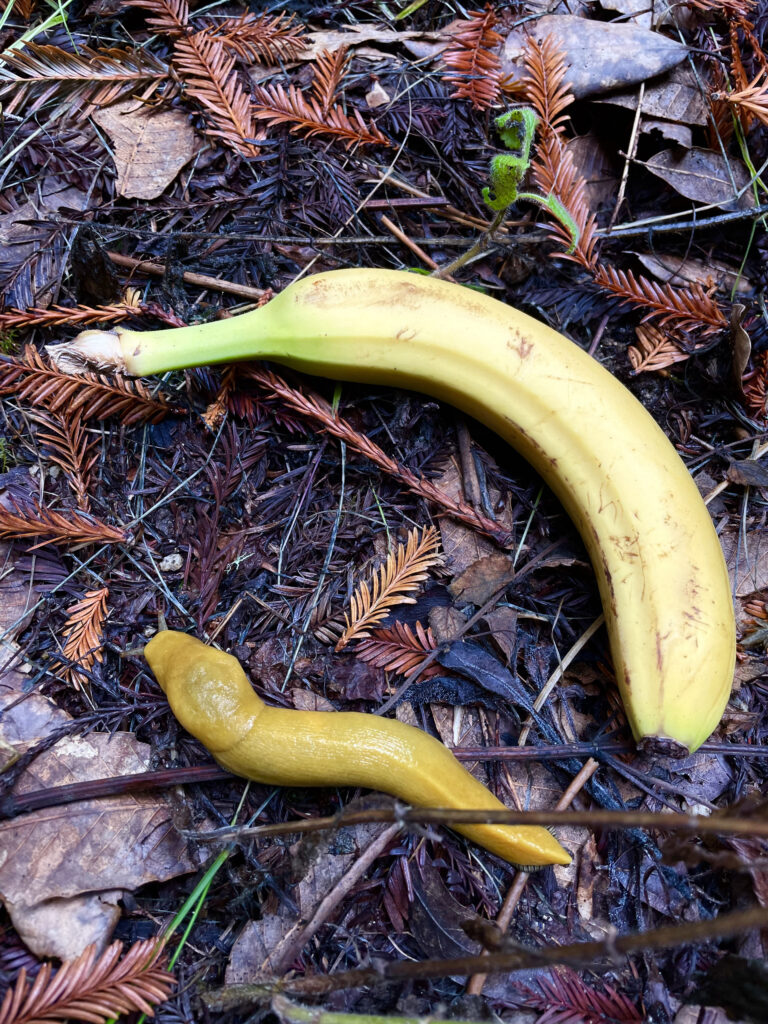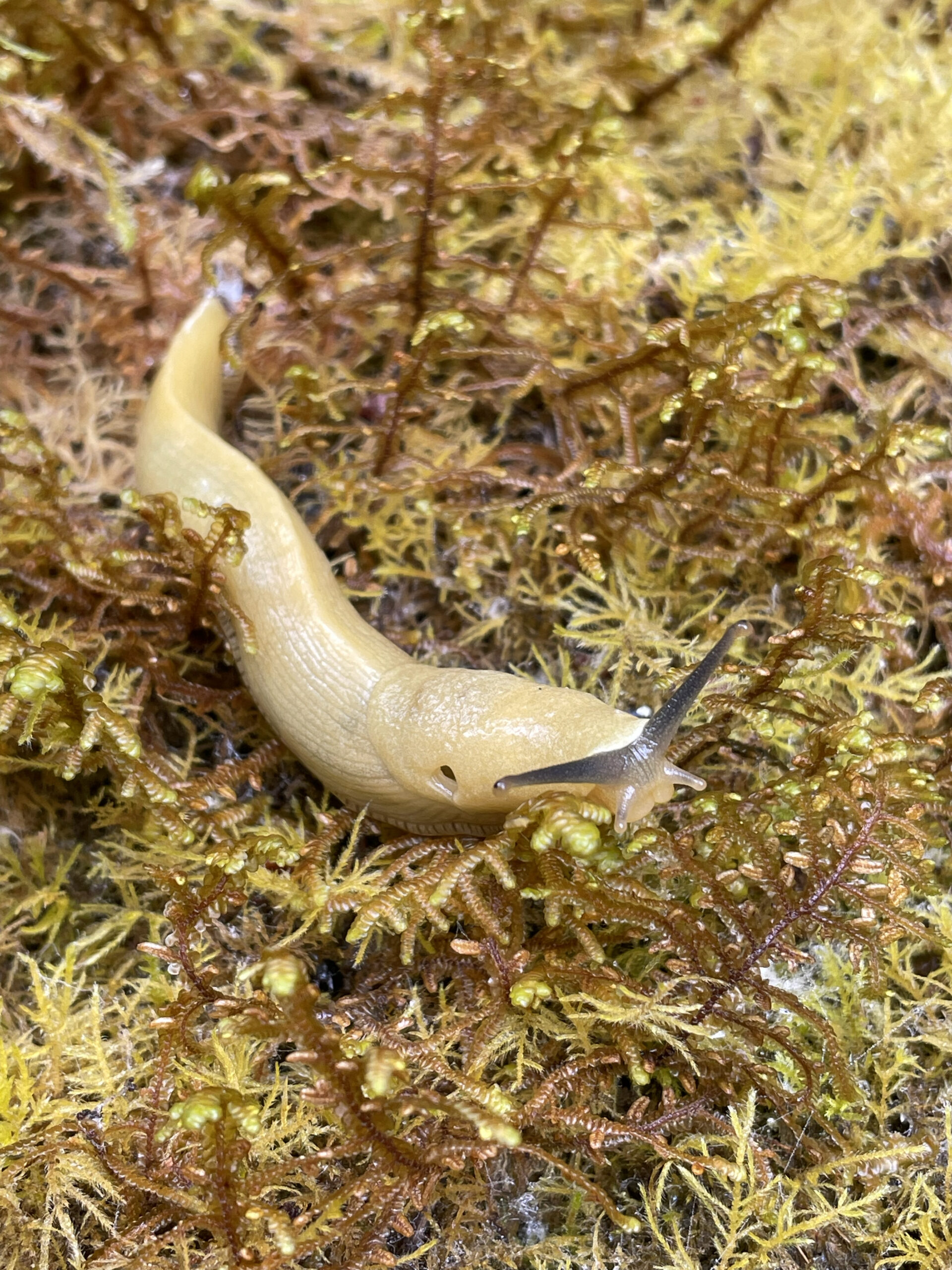News
Banana Slugs – Slimy But Helpful!
March 26, 2024

If ever there was a mascot for the cool, damp forests of the West Coast, it’s the banana slug, a common name applying to several species in the genus Ariolimax. The most common in Northern California’s forests is the Pacific banana slug (Ariolimax columbianus).
Reaching top speeds of up to 30 feet per hour, not bad for a snail, they are also the world’s second largest species of slug (banana for scale). Pacific banana slugs’ colors range from bright yellow to dark brown, and they can have any number of black spots. You might think that their bright yellow color would stand out in the dark understory of a conifer forest, but not so! They’re surprisingly hard to find when they’re among the dead leaves and mosses on the forest floor. They also are tiny recycling centers of the forest, eating pretty much anything they find – including poop! – and turning it into nutrients for the surrounding plants. Favorite foods that aren’t poop include fungi and the first new leaves on spring wildflowers.
Why so slimy?
It’s no secret that you can tell where a banana slug has been by the trail of mucus left behind. This slime serves many functions, from deterring predators to surviving warm summers. While they aren’t highly toxic as their colors would have you believe, that slime coating numbs the tongues of any predator bold enough to try and eat one. They are usually spit out unharmed. Their slime also forms a barrier between the rough ground and their foot – the large underpad they slither around on – which makes it much easier for them to scoot around. When droughts occur or the weather heats up, the slime thickens and they wrap themselves in a blanket of mucus and forest litter to “aestivate,” a form of temporary hibernation until it’s cool and wet enough again to venture forth.
Most species are found from British Columbia down to Santa Cruz, but there’s also a population high atop Palomar Mountain in San Diego. This population is a relic of a much cooler and wetter time during the end of the last Ice Age. Banana slugs are very sensitive to drying climates and can only aestivate for so long, so preserving connectivity between habitats is key for them to be able to continue moving (however slowly) to more suitable areas as the world warms.
So, please stay out of their way, help them along their path… and don’t try to eat one!
Story and photos courtesy Michael Heine
